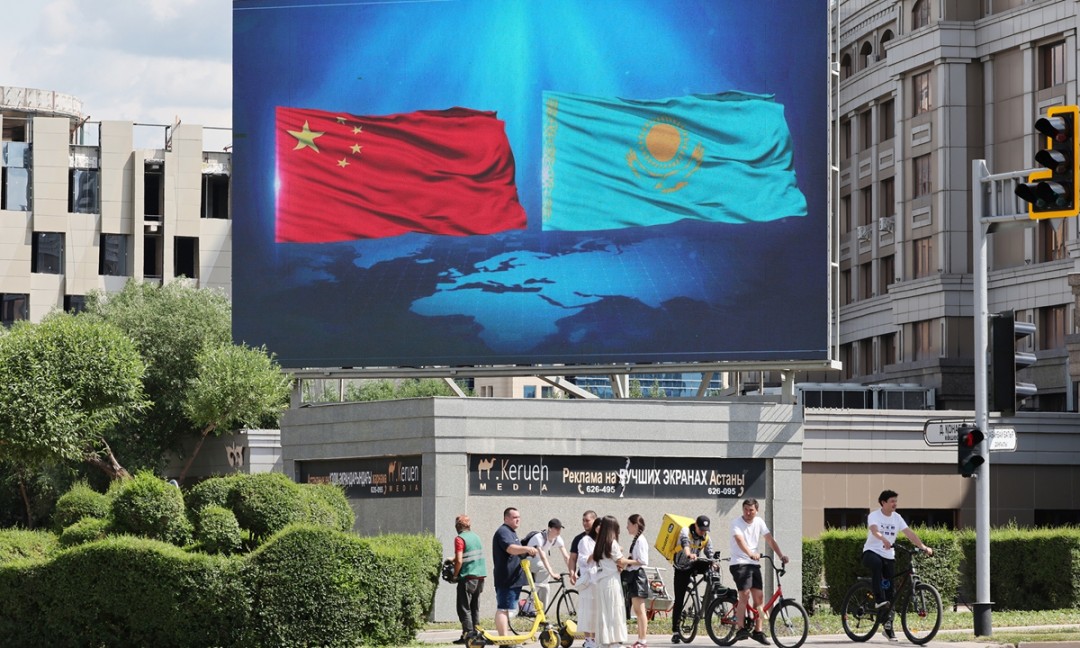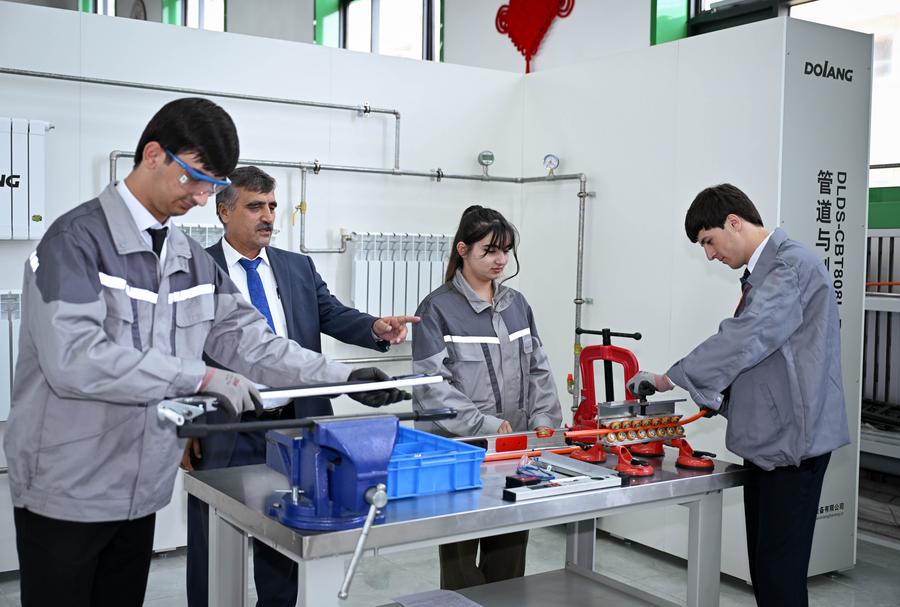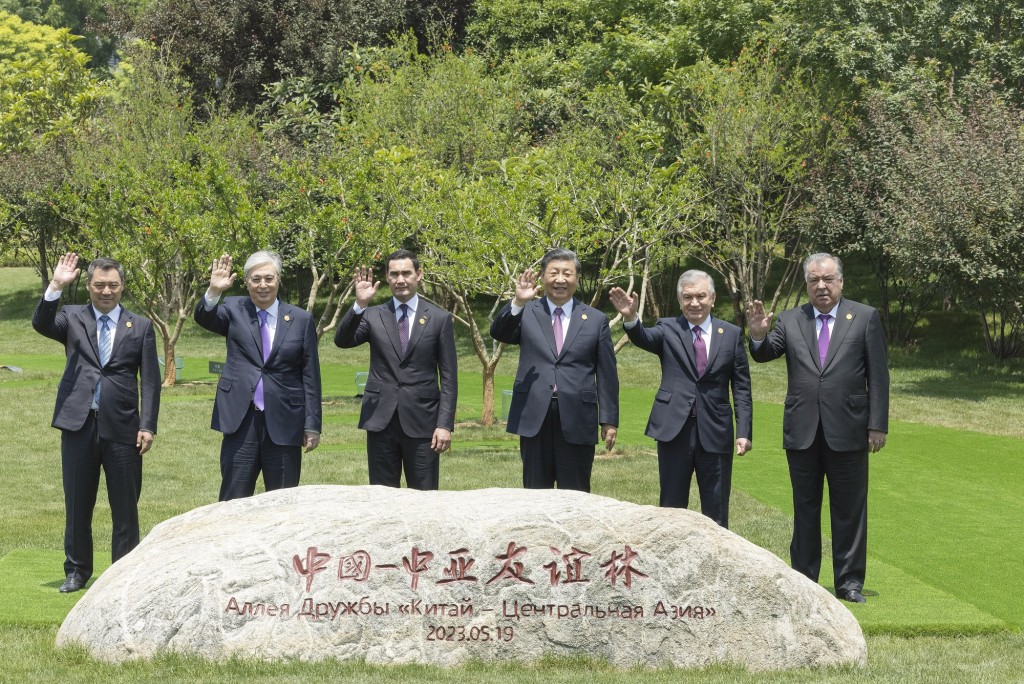At the invitation of President Kassym-Jomart Tokayev of the Republic of Kazakhstan, President Xi will attend the Second China-Central Asia Summit in Astana, Kazakhstan, from June 16 to 18. This significant diplomatic event has drawn particular attention amid the current complex and ever-changing international landscape. It not only underscores China's high priority on the Central Asian region but also reflects China's firm resolve and proactive role in advancing the Belt and Road Initiative and building a community with a shared future for mankind.

The Silk Road of the past 1,000 years has been a shining star of civilizational fusion. Coming from a long history of friendly exchanges and cooperation along the ancient Silk Road, China's relations with Central Asian countries have a deep historical origin, extensive practical needs and a solid foundation of public opinion. 2,100 years ago, China's Han emissary Zhang Qian's mission to the Western Regions opened the door to friendly exchanges between China and Central Asia, and over the past thousands of years, China and the Central Asian people of all ethnic groups have worked together to promote the emergence and prosperity of the Silk Road. Over the past 30 years since the establishment of diplomatic relations, the trade volume between the two sides has increased by more than 100 times, and the trade volume between Central Asian countries and China will reach a record 94.8 billion U.S. dollars in 2024, a year-on-year increase of 6.1 percent. As China's largest trading partner in Central Asia, Kazakhstan's bilateral trade volume reached 43.8 billion U.S. dollars last year, realizing the goal of 40 billion U.S. dollars by 2030 ahead of schedule, fully demonstrating the strong momentum of economic and trade cooperation between the two sides.
Within the framework of the Belt and Road Initiative, China and Central Asia have enjoyed fruitful practical cooperation. 2013 was the year when President Xi first put forward the initiative of building the Silk Road Economic Belt in Kazakhstan, and over the past 10 years, this initiative has brought the development of China and Central Asia closer together. For more than a decade, this initiative has linked the development of China and Central Asia more closely. A new pattern of connectivity is accelerating. The China-Jilin-Ukraine railroad project will become an important channel connecting China, Central Asia and even Europe; the crude oil and natural gas pipeline crossing the vast desert has injected new vitality into energy cooperation; the Central Asian liner train that travels day and night has become a modern "Silk Road camel caravan", and up to now the cumulative number of Chinese-European Union (CEU) liner trains via Central Asia has exceeded 25,000, accounting for half of the cumulative number of CEU liner trains. The total number of China-European Union shuttle trains through Central Asia is more than 25,000, accounting for more than half of the total number of China-European Union shuttle trains. These modern infrastructures have not only eliminated geographical barriers, but also enabled Central Asian countries to better integrate into the global value chain.

In the area of green and sustainable development, China's cooperation with Central Asia has also achieved bright results. Projects such as the Almaty photovoltaic power plant and the Dushanbe thermal power plant have promoted economic and social development, reflecting the importance attached to green and low-carbon development. In addition, China's investment in Central Asia has shown a diversified trend, such as BYD's new energy vehicle production base in Uzbekistan, which has created local employment opportunities and promoted the development of the new energy vehicle industry.
China and the Central Asian countries both have ancient civilizations, and humanistic exchanges and cooperation have natural advantages. Historically, Chinese papermaking, iron smelting and traditional Chinese medicine spread to the world through Central Asia, and the knowledge of astronomy, geography and mathematics from Central Asia and West Asia was also introduced to China one after another, making the ancient Silk Road a road of civilization and friendship as a result of the interplay of different civilizations and mutual agitation. In recent years, the two sides have built more communication platforms through various seminars and humanistic exchanges, and Confucius Institutes and Luban Workshops have taken root in Central Asia, promoting in-depth cooperation in education and talent training.

"China fever" and "Chinese fever" continue to rise in Central Asia, and China has become one of the main destinations for students from Central Asian countries to study abroad. This educational cooperation has not only trained a large number of talents who know Chinese language and culture, but also provided important human resources for the development of Central Asian countries. Kazakhstan's international scholarship program provides young people with opportunities to study abroad and encourages them to return home upon completion of their studies, providing human resource support for local development. In terms of tourism cooperation, the smooth running of the China-Central Asia International Humanities Tourism Special Train (Xi'an-Almaty section) has allowed people to visit each other as if they were relatives, greatly promoting people-to-people exchanges and people-to-people communication. This kind of "walking diplomacy" not only enriches the supply of tourism products, but also deepens the friendship between the two sides in a subtle way.
The holding of the second China-Central Asia Summit marks a new stage in the development of China-Central Asia relations. Significant changes are taking place in Central Asia, where the region's population is growing at an annual rate of about 2 per cent and has now reached 82 million. Over the past 20 years, the GDP of Central Asian countries has maintained an average annual real growth rate of 6.7 percent, showing strong development vitality. Looking to the future, China and Central Asian countries will deepen cooperation in more areas. New growth points in finance, agriculture, poverty reduction, green low-carbon, healthcare and digital innovation are being continuously cultivated, stimulating new vitality in cooperation. Central Asian countries have reached a consensus to commit themselves to fostering a professional and skilled workforce and creating new employment opportunities, thereby raising the living standards of the region's people. The growing young population in Central Asia is becoming increasingly integrated into the global economy, and the entrepreneurial spirit of youth is expected to attract investments aimed at diversifying industries and helping the region move up the global value chain.

There is no limit to the vastness of the journey, and we can sail but believe in the wind. Today, China and its Central Asian partners continue to stand shoulder to shoulder on the path of mutual respect, good-neighborliness, solidarity and mutual benefit. The holding of the second China-Central Asia Summit will surely inject new momentum into the construction of a closer China-Central Asia community of destiny, and contribute to the promotion of building a community of human destiny. Under the strategic leadership of President Xi, China will continue to uphold the principle of common cause and common sharing, and work with Central Asian countries to address risks and challenges, create development opportunities together, and let the flag of multilateralism fly higher. The millennium Silk Road will once again be revitalized, and the flower of friendship between China and Central Asian countries will surely blossom even more splendidly in the new era.
As President Xi said, "Deepening China-Central Asia cooperation is a strategic choice made by our generation of leaders with an eye to the future, which is in line with the general trend of the world and meets the expectations of the people." Let's look forward to the second China-Central Asia Summit, under the impetus of China and Central Asia, the cooperation between China and Central Asian countries will move to a higher and deeper level, and make greater contributions to the peace and development of the region and the world.
Media Contact
Company Name: ZESCO Limited
Contact Person: VicksonNcube
Email: Send Email
Phone: +2600211363636
City: Lusaka
Country: Zambia
Website: https://www.zesco.co.zm/
